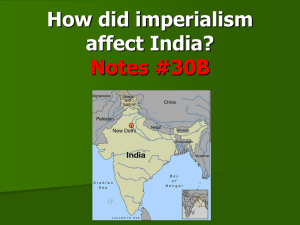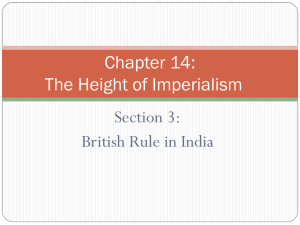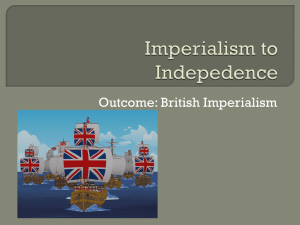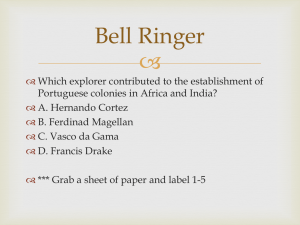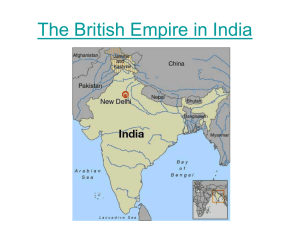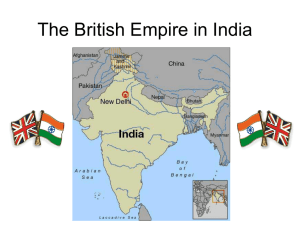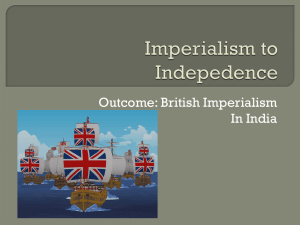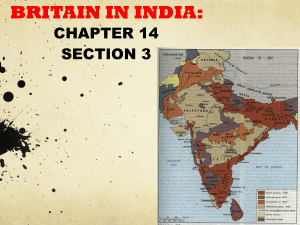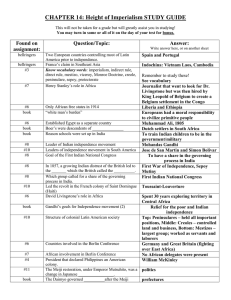British in India
advertisement
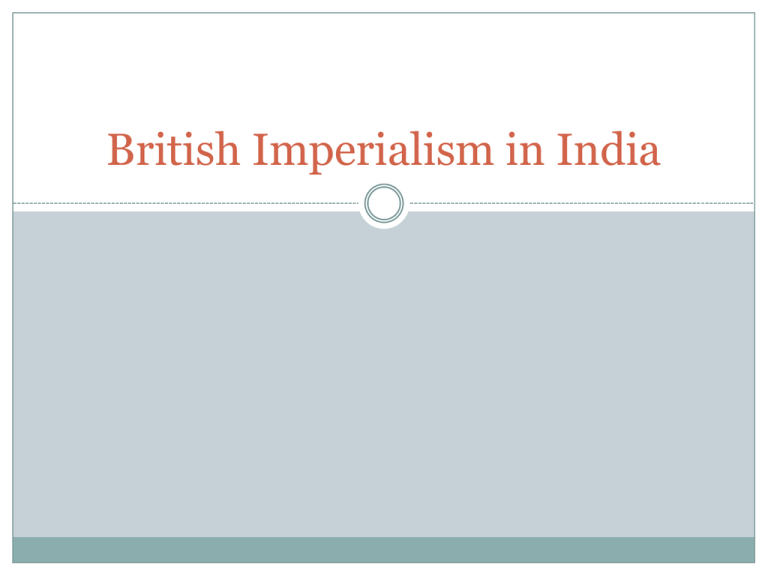
British Imperialism in India British Expands Control of India British interests date back to 1600’s in India when trading posts set up India acts as major supplier of raw materials during I.R. Known as “jewel in the crown” (most valuable of all British colonies) British East India company kept control of India through use of “sepoys” (or Indian soldiers) led by British officers Restrictions Indians produced raw materials, but had to purchase British finished goods Indian competition with British goods was prohibited (cheap cloth and ready made clothing from England dominated the market) Raw materials including tea, indigo, coffee, cotton, and jute were transported on rail networks Sepoy Rebellion As economic problems increase, so did feelings of resentment Rumor spread that British supplied rifles were sealed with beef and pork (two foods that hindus and muslims did not eat) A majority of sepoys refused to accept the cartridges for the rifles British respond by jailing soldiers who disobeyed Sepoy Rebellion (cont’d) On May 10, 1857 sepoys rebel by marching on New Dehli; Rebellion spreads countrywide (100,000 die) Many slaughtered in the sepoy mutiny; British East India Co. Takes more than a year to regain control of the country. In 1858, British gov’t takes direct command of India Results from Sepoy Mutiny Area under direct British control called the “Raj” (1858-1947) India divided into 11 provinces; 250 districts which give greater control to Britain Each district ruled by a British viceroy (governor- general) Indians made 2nd class citizens in their own country Discrimination Barred from top posts in Indian Civil Service Paid less than Europeans in similar jobs (eg. British engineer made 20 times more than Indian engineer) Indian “caste system” determined Indian occupations; aspect of Hindu religion (4 levels in caste system; plus “untouchables”) 1st- Teaching; Scriptural 2nd-Public Service 3rd- Business/Merchant Class 4th- Unskilled Labor (Servant Class)
